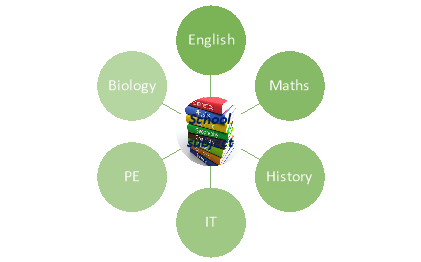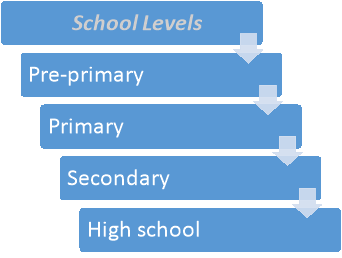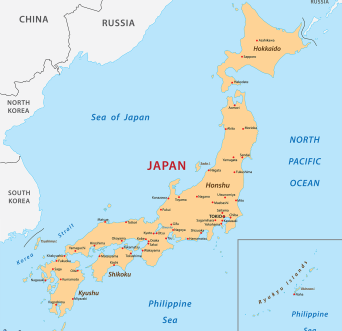Education. School Life in Japan
The subject: Education. School Life in Japan
The object: to master skills to name different school subjects; to learn new country facts; learn how to combine different topics; to develop reading skills; use computer skills; to develop memory, attention, speech, writing skills.
Equipment: map, tables, computer…
The procedure
I. Beginning of the lesson.
1) Greeting
Good morning, dear students!
Nice to meet you!
How are you?
How are your things?
2) Conversational warm - up
Today we have an unusual lesson. We review our knowledge about Ukrainian educational system; add some other knowledge about school life; travel to one of the most developed countries; use your computer skills. Let’s start our lesson!
- Association.
And now the first task. Association. You must take a piece of paper and write down your associations to the word “Education”
You have 5 minutes. Then demonstrate your answers.

Very good
- Communication
You wrote such words as subject, school, break. Now give me more information about school life.
- What subjects do you know?
- What is your favourite subject? Why do you like it?
- Which subjects are interesting for you?
- Which subjects are boring for you?
- How many days a week do you go to school?
- What is your favourite school day? And why?
- When does the school year begin?
- At what time do the school classes begin in your school?
- How many main school levels are there in Ukraine? What school levels do you know?
- What school isn’t compulsory in Ukraine?
- What types of school are there in Ukraine?
That’s good
c) Proverbs
We have many proverbs about education and knowledge. Next task. Let’s complete the proverbs.
- Live and …
- It’s never late …
- To know everything is …
- Learning is a treasure …
II. Main part
1) Vocabulary. (Computer’s work)
And now we start our computer work. Take your places. Open the file “Education. Form 7”. Task #1. You have a word list. You must do two tables in SmartArt. Put the words to the correct table.
Let’s start.
Word list: English, Maths, Pre-primary, secondary, History, primary, IT, PE, high school, Biology School subjects, School levels.


Please, demonstrate your results
2) New material
When we speak about education, we often think of school.
- But is school only one way where we can get new knowledge? (No, it is not)
- We can get new knowledge in many different ways. As for example:
When we read new books;
When we watch scientific programs;
When we speak with other people;
Tell me please, is travelling a way of education?
There are many proverbs about travel as a kind of education. Here are some of them:


Today we have a visual travel to the “Land of the Rising Sun”. It’s Japan. And we speak about school life in Japan.
Your task for today learn more fact about education. And as summary make a presentation “School life in Japan”.
- pre-reading time
Presentation “Fast Facts”
At first, listen some fast facts about Japan.
OFFICIAL NAME: Japan
FORM OF GOVERNMENT: Parliamentary government with a constitutional monarchy
CAPITAL: Tokyo
OFFICIAL LANGUAGE: Japanese
AREA: 145,883 square miles (377,835 square kilometers)
MAJOR MOUNTAIN RANGES: Japanese Alps
MAJOR RIVERS: Biwa, Inawashiro, Kasumigaura
Look at the map of Japan.
Japan is a sovereign island nation in East Asia. Located in the Pacific Ocean. Japan's name mean "sun origin", and it is often called the "Land of the Rising Sun”. Japan is consisting of about 6,852 islands. The four largest are Honshu, Hokkaido, Kyushu and Shikoku, which make up about ninety-seven percent of Japan's land area and often are referred to as home islands.

- reading
We know that Japan is one of the biggest countries. And I want to read some facts about education and school life in Japan.
Did you know that Japanese school system is so unique and different from the rest of the world?
Japanese state education system is a national pride in this country, with a traditional approach that has helped Japanese pupils easily outperform their counterparts all around the world.
Japanese school system consists of:
- 6 years of the elementary school
- 3 years of junior high school
- 3 years of senior high school
- 4 years of University.
Most schools operate on a 3-term system with new school years starting every April. A school day on weekdays lasts for 6 hours. Even after the school ends, children still have drills and other homework to keep them busy. Vacation are 6 weeks long during summer break and about 2 weeks long during both in winter and spring breaks. There is often homework during these vacations.
What Do Children Lear in Japanese Schools?
The subjects they study include Japanese, mathematics, science, social studies, music, crafts, physical education and home economics (to learn simple cooking and sewing skills). An increasing number of elementary schools have started teaching English as well. Students also learn traditional Japanese arts like shodo (calligraphy) and haiku.
Here are some interesting facts about Japanese schools:
- Nearly all students wear a school uniform.
- In public elementary and junior high schools a school lunch is eaten in the classroom.
- Students don’t skip classes and they don’t arrive late for school.
- Students in Japan actually feel happy in school (85 percent of them).
- Students spend on average 235 minute per week in regular math classes, but they spend less time in language and science classes.
- Pre-primary education is of the utmost importance for Japan. It’s not surprising that 99 percent of Japanese children attend some kind of the pre-primary education.
- post-reading (computers tests)
1. The first task for you. How do you think are these facts true or false?
1) Is Japanese state education system a national pride in this country? (tr.)
2) Does Japanese school system consist of 2 levels. (f. (4 levels))
3) Does school year start every September? (f. (every April))
4) Do Japanese students study home economics? (tr.)
2. Now you check your knowledge. Let’s make a computer test.
- Japanese school system is ….
- so unique and different
- so beautiful
- so difficult
- The elementary school lasts …
- 2 years
- 4 years
- 6 years
- The junior high school lasts
- 2 years
- 3 years
- 6 years
- The senior high school lasts
- 4 years
- 6 years
- 3 years
- Most schools operate on a … system
a) 3-term
b) 4-term
c) 2-term
- When does a new school year begin?
- In September
- In January
- In April
- How much hours do a school day last?
- 5 hours
- 6 hours
- 7 hours
- What do Japanese students do after classes?
- children have drills and other homework to keep them busy
- children have drills and other housework to keep them busy
- children have lessons and other homework to keep them busy
- What subjects do students study in Japanese school?
- Japanese, mathematics, science, crafts, PE and home economics
- Japanese, French, social studies, music, crafts, physical education
- Japanese, mathematics, science, football, music, crafts
- Put school levels in the correct order.
1) Primary school
2) Junior high school
3) Senior high school
4) University
(Test mark)
3. Summary
1) Make presentation about Japanese school life
2) What new fact did you learn on the lesson?
–
–
–
–


про публікацію авторської розробки
Додати розробку
